Fishguard is a well known town in North Pembrokeshire, and with its fine harbour is the gateway to Ireland from South Wales. The main place of remembrance for the fallen of both World Wars at Fishguard is the Town Cenotaph, which is located in a small Garden of Remembrance on West Street, Fishguard. There is another memorial within St. Mary’s Church, with similar names on, and a third memorial, which is located within the cemetery of Hermon Baptist Church and commemorates its fallen parishioners. This page commemorates the members of Hermon Baptist Church who fell during both wars.
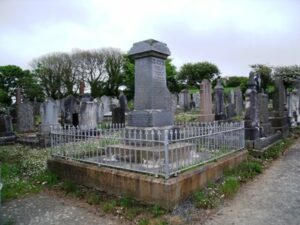
The Great War, 1914-1918
George Batin, Private, 22841, King’s Shropshire Light Infantry. George was born at Fishguard, the son of Thomas and Lettice Batin, later of Trewrach, Dinas Cross. He enlisted at Fishguard into the 1st Battalion, King’s Shropshire Light Infantry, which was attached to 16 Brigade, 6th Division. The Division was in Ireland at the outbreak of War, and was shipped to France, landing at St. Nazaire on 10 September 1914. The BEF was still fighting the desperate rearguard action on the Aisne, and so the 6th Division was rushed to support them there, before moving North to Flanders. They next fought at Hooge, before being brought South to the Somme. By now, due to the tremendous amount of casualties, George had been attached to the 2nd Battalion, Welsh Regiment, in the 1st Division, and they were in the thick of the fighting, fighting at Pozières, when George was mortally wounded. He was brought back to the Casualty Clearing Station at Albert, but Died of Wounds on 27 July 1916, aged 31. He is buried in Albert Communal Cemetery Extension, France. His brother Griffith also fell.
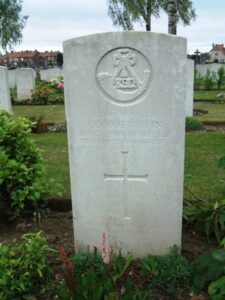
Griffith Batin, Ordinary Seaman, J/52871, Royal Navy. Griffith was born at Fishguard, the son of Thomas and Lettice Batin, later of Trewrach, Dinas Cross. He enlisted into the Royal Navy, serving aboard H.M.S. Mersey. She was a ‘Humber Class’ Monitor, used as an offshore gun battery by the Royal Navy, especially designed as a low draught ship, suitable for service in coastal waters and rivers. Griffith Died of Disease at Tanzania on 2 November 1916, and is buried at Dar Es Salaam War Cemetery, Tanzania. His brother George also fell.
John James Davies, Able Seaman, Z/ 1889, Royal Naval Volunteer Reserve. John was born on 19 September 1879, the son of Thomas Davies, of Casnewydd, Goodwick. He enlisted into the Royal Naval Volunteer Reserve, serving aboard the SS Baron Jedburgh. The ship was at Canada when John was taken ill. He Died on 21 October 1918, aged 39. He is buried in Sydney (Harwood Hill) Cemetery, Canada.
Thomas Henry Davies, Private, 60663, Welsh Regiment. Thomas was born at Jordanston Hill, and enlisted at Cardiff into the Welsh Regiment. He was posted to the Mediterranean, where he joined the 24th Battalion, Welsh regiment. The battalion had been formed in 1917 by the merging of the Pembroke and Glamorgan Yeomanry, and was attached to the 231 Brigade, 74th (Yeomanry) Division. The Division had formed in Egypt in January 1917 and had fought through the Palestinian Campaign, at the Battles of Gaza and the Battle and capture of Jerusalem. Thomas was killed in action during the Third Battle of Gaza, on 27 December 1917. He is commemorated on the Jerusalem Memorial, Israel.
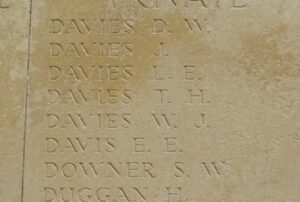
William John Davies, Deck Hand, 15108DA, Royal Navy. William was born at Fishguard on 31 October 1889, the son of John and Martha Davies, of Sea View, Penwallis. He served in the Royal Naval Reserve, aboard HM Trawler Gambri. The Gambri was lost with all hands off the British Isles on 18 January 1918, and aboard her was William, who was 28 years old. He is commemorated on the Plymouth Naval Memorial, Devon.
Edwin Evans, Gunner, 725752, Royal Field Artillery. Edwin was born in Mathry, the son of William and Maria Evans. The family later resided at 5, Vergam Terrace, Fishguard. He enlisted at Carmarthen into the Royal Field Artillery, and was posted into ‘B’ Battery, 98th Brigade, Royal Field Artillery, which was attached to the 22nd Division. The Division was in France during September, 1915 but were soon to embark at Marseilles for Salonika, arriving by 13 December 1915. They remained there for the duration of the War, and Edwin Died there of sickness on 19 October 1917, aged just 23. He is buried in Mikra British Cemetery, Kalamaria, Salonika. The memorial states that Edwin lived at Hottipass Street.
H. Evans. This man cannot presently be identified, but the memorial shows he lived at Bank House. Joseph and Margaret Evans lived at Bank House, and had three children, James, Catherine and Olwen Evans. There is no trace of a H. Evans there up until 1911.
Rhys Edward Francis, Third Engineer, Mercantile Marine. Rhys was born at Merthyr Tydfil, the son of John and Elizabeth Francis. He moved to Fishguard where he married Mary Francis (nee Miles), of Awelfan, Fishguard. Rhys served in the Mercantile Marine as Third Engineer aboard the S.S. Paddington, a London registered cargo steamer. On 21 July 1917, Paddington was on voyage from Cartagena to Britain with Admiralty cargo and passengers, when she was torpedoed and sunk by the German submarine U-96, 250 miles west of Fastnet, with the loss of 29 lives. Rhys was 26 years old when he died that day, and is commemorated on the Tower Hill Memorial, London.
David William Griffiths, Private, 33986, South Wales Borderers. David was born in Fishguard in 1885, the son of William and Mary Griffiths. He enlisted at Haverfordwest on 17 August 1914 into the South Wales Borderers, and was posted to the 4th Battalion, South Wales Borderers. David served with the battalion at Gallipoli from 10 July 1915, where it was attached to 40 Brigade, 13th (Western) Division. David was shot in the hand at Gallipoli and was evacuated off the peninsula for treatment. After recovering David was transferred to the 1st Garrison Battalion, Royal Welsh Fusiliers. On 20 December 1916 he was posted to France, joining the BEF, and transferred to the 14th Battalion, Royal Welsh Fusiliers, which was at Ypres, attached to 113 Brigade, 38th (Welsh) Division. The Division had moved there from the Somme in the summer of 1916, taking up positions at Boesinghe, along the Yser Canal. On 31 July 1917 the Division took part in the Passchendaele Offensive, capturing the strongly fortified Pilckem Ridge, before taking part in the Battle of Langemarck. David was badly wounded there by shell fragments, and was sent to the 47th Casualty Clearing Station at Dozinghem, where he died of wounds on 30 August 1917, aged 32. He is buried there, at Dozinghem Military Cemetery, Belgium.
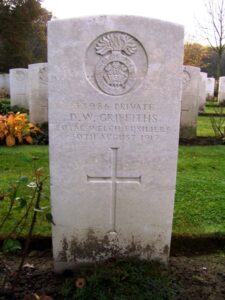
William John, Sapper, 63065, Royal Engineers. William was born in Fishguard in about 1885. He married Margaret Owen, at Hermon Chapel, Fishguard on 30 March 1907 and their son Owen Llewellyn John was born at Glyn-y-Mel Road, Lower Town, Fishguard on 17 May 1908. Margaret sadly died in 1911, and William moved to 16, Bryn Bedw, Blaengarw, where he worked as a mason and brick layer. He enlisted into the Royal Engineers on 6 March 1915 and was posted to North Wales to join the 38th Signal Company, which was attached to the 38th (Welsh) Division. The division moved to Winchester soon after William joined his unit, and it began training as a complete unit in preparation for its move to France in December 1915. On 17 September 1915 William was among a large number of men inoculated for typhoid, but within days he began to suffer from some sort of reaction and was hospitalised. He was finally discharged from the army as medically unfit on 10 May 1916, suffering from breathlessness and heart problems. He returned to Fishguard and died at Pembroke Dock Military Hospital on 26 May 1917, aged 31. William’s details were passed onto the CWGC by myself on 7 November 2015 and he was accepted for commemoration on Wednesday 9 December 2015. He is commemorated on the Brookwood Memorial, as his place of burial is not known.
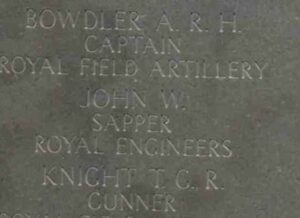
Samuel George Jones, Private, M2/121139, Army Service Corps. Samuel was born in 1889, the son of Thomas and Martha Jones, of 73, High Street, Fishguard. He was a fitter at Fishguard prior to the war, and enlisted at Goodwick on 3 September 1915 into the Army Service Corps. Samuel embarked at Devonport on 7 November 1915 aboard SS Anchises, and after disembarking at Alexandria three days later, was posted to the 569th Mechanical Transport Company, Army Service Corps. The following month the Company sailed for Basra. Samuel then served in the Mesopotamian Campaign, and died of cholera in Mesopotamia on 16 June 1916. He is buried in Basra War Cemetery, Iraq.
David Lewis, Gunner, 667, Royal Garrison Artillery. David was born at Pembroke, the son of Lewis Lewis and Phoebe Lewis. The family moved to Whitland where David was brought up, but he then married Mary Lewis, of Bridge Street, Lower Fishguard, and lived at Fishguard prior to the outbreak of War. He enlisted at Fishguard into the Royal Artillery and was sent to Pembroke Dock where he joined the 114th Siege Battery, Royal Garrison Artillery. The battery moved to France on 14 June 1916 equipped with 6” Howitzers. David was killed in action on 5 August 1917, aged 31. He is buried on the Somme, at Péronne Road Cemetery, Maricourt, France.
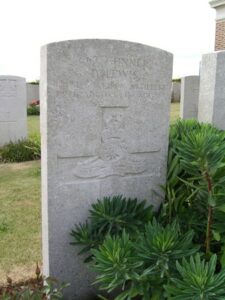
William George Mathias, Guardsman, 1210, Welsh Guards. William was born at Letterston in 1885, the son of John and Sarah Mathias. The family moved to Gilshave, Fishguard prior to the war, and William enlisted at Bridgend into the 1st Battalion, Welsh Guards. The battalion had been formed after the Royal Warrant of 26 February 1915, and joined the 3rd Guards Brigade, Guards Division in France during the summer. They saw their first major action during the Battle of Loos in September 1915. William did not make it to France though, as he died at Caterham Military Hospital, Surrey on 20 May 1915, aged 30. William is buried in Fishguard (Hermon) Baptist Burial Ground.
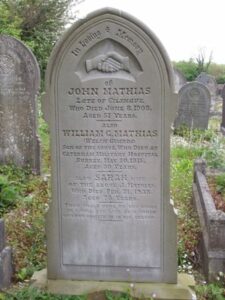
Tom Morse, Sergeant, M/321457, Army Service Corps. Tom was the son of Thomas and Mary Morse, of Durbach Farm, Durbach. Tom was a traction engine-driver before the war, and attested to serve with the Motor Transport arm of the Army Service Corps in December 1915, being called up in May 1917. Not much is known of Tom’s service in the War, but it is doubtful if he made it to France, serving instead with ‘V’ Company, ASC at Cambridge. Sadly, Tom became ill with pneumonia towards the end of the war, and died at Colchester Military Hospital on 26 October 1918 aged 32. He is buried in Fishguard (Hermon) Baptist Burial Ground. His service papers show that money was being stopped from his wages for an illegitimate child, the son of Martha Nicholas, of Jordanston, Pembroke, born on 23 July 1913. No more is known of Tom’s son.
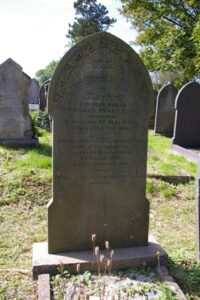
William Mathias Richards, Pioneer, 130559, Royal Engineers. William was born at Mathry on 21 November 1881, the son of Joseph and Hannah Richards. The family later resided at Fishguard, but William married, and lived with his wife Hannah Richards, at 27, Cranbury Avenue, Southampton. William enlisted ‘In the Field’, into the South Wales Borderers, but was transferred into the Royal Engineers, serving in ‘F’ Special Company. The Special Companies were Chemical Warfare Engineers, which handled Gas Shells to be fired from Stokes Mortars. William was Killed in Action on 6 April 1917, during the build up to the Battle of Vimy Ridge, part of the main Battle of Arras, while his Company were situated in the Souchez Valley. He was aged 36, and is buried in Zoave Valley Cemetery, Souchez, France.
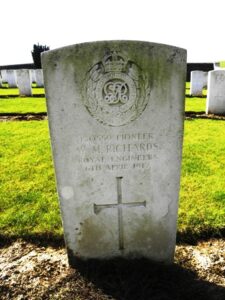
William Rowland Roberts, Lance Corporal, 72741, Sherwood Foresters. William was born in Scleddy on 17 March 1891, the son of William and Ann Roberts, of The Post Office, Dwrbach. He enlisted at Haverfordwest on 27 January 1915 into the Army Service Corps, but later transferred into the 2nd Battalion, Sherwood Foresters (Notts and Derby Regiment), part of 71 Brigade, 6th Division, in November 1917. The Division fought at Hooge, and at the Somme, before fighting at Loos and the Battle of Cambrai, where William joined them. In Spring 1918 they were in Flanders, and fought in the Battles of Kemmel, where William was Killed in Action on 19 April 1918, aged 27. Due to the terrible conditions, and the ferocity of the fighting at the time, his body was lost, and so he is commemorated on the Tyne Cot Memorial, Zonnebeke, Belgium.
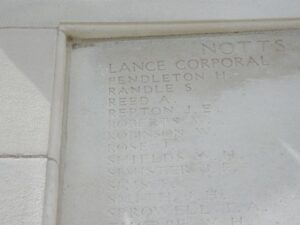
Arthur George Thomas, Private, 143446, Royal Engineers. Arthur was the son of David Thomas and Sarah Thomas (nee Miles), of Tynewydd, Fishguard. He served with the 130th Field Company, Royal Engineers which was attached to the 25th Division. Very little is known of Arthur’s war but he survived the conflict only to die of influenza at Caudry on 7 December 1918, aged 21. Arthur is buried in Caudry British Cemetery, France. His brother John Miles Thomas also fell.
John Miles Thomas, Private, 29500, South Wales Borderers. John was born in 1894, the son of David and Sarah Thomas (nee Miles), of Tynewydd, Fishguard. He enlisted at Tonyrefail into the army. He was posted to the 2nd Battalion, South Wales Borderers, which had fought at Tientsin, China, before being recalled to Britain, where it joined 87 Brigade, 29th Division. The Division took part in the Gallipoli landings, landing at Helles on 25 April 1915. After a hard campaign at Gallipoli, they were evacuated on 2 January 1916 and were shipped to Marseilles via Egypt, arriving on 29 March 1916. The 2nd SWB fought at Beaumont Hamel on 1 July 1916, suffering heavy casualties, and then at the Battle of Arras, before moving to Ypres, where they fought in the Battle of Langemarck. John was killed during the fighting here, on 16 August 1917, aged 23. His body was lost in the mud of Flanders, and he is commemorated on the Tyne Cot Memorial, Belgium. His brother Arthur also fell.
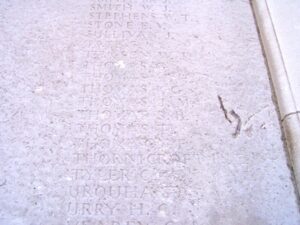
John Rees Thomas, Driver, T2/10649, Royal Army Service Corps. John was the son of Benjamin and Lettice Thomas, of 15, Smyth Street, Fishguard. He was living in the valleys prior to the war and enlisted there into the Army Service Corps. He embarked for France on 5 May 1915 and joined the 1st Company, Army Service Corps as a Driver. It is not currently known why, but John died at home at Fishguard on 17 July 1916, aged 37. He had been married, but sadly his wife died just three weeks after their marriage. No more is known of him, as he is not commemorated by the CWGC. His brother Joseph Henry Thomas also fell.
Joseph Henry Thomas, Private, 62360, Welsh Regiment. Joseph was born in 1888, the son of Benjamin and Lettice Thomas, of 15, Smyth Street, Fishguard. He enlisted there into the army on 23 February 1916, and was posted to France on 29 March 1918, where he joined the 9th Battalion, Welsh Regiment. The Battalion had been in France since July 1915, attached to 58 Brigade, 19th (Western) Division, and had taken part in the Battle of Loos in 1915, and the Battle of the Somme the following year. In the summer of 1917 the Division took part in the Battle of Messines, and the Battle of Passchendaele. On 21 March 1918 the Division was caught by the German Spring Offensive, and suffered terrible casualties over the coming days, before being withdrawn to Ploegsteert Wood to rebuild. However, a fresh attack hit them there, and the Division suffered terrible casualties in Flanders during the chaotic first few weeks of the attack. Joseph was Killed in Action in Flanders on 18 April 1918, aged 29, and is buried at Haringe (Bandaghem) Military Cemetery, Belgium. His brother John Rees Thomas also fell.
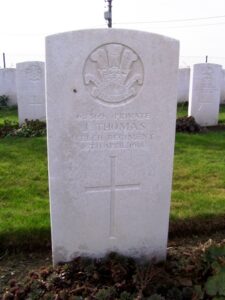
Morgan Thomas, Private, 307393, Sherwood Foresters. Morgan was born at Mathry in 1892, the son of John and Dorothy Thomas. After 1901 the family had moved to 22, Brodog Terrace, Fishguard. Morgan enlisted at Fishguard into the army, and was posted to the 2/8th Battalion, Sherwood Foresters (Nott’s and Derby Regiment), part of 176 Brigade, 59th Division. The Division were sent to Ireland in April 1916 to quash the rebellion there, before landing in France in February 1917. In France they followed the German withdrawal to the Hindenburg Line, before moving to Ypres, where they fought in the Battle of the Menin Road. The Division turned north, to take Polygon Wood, alongside the 4th Australian Division, and it was at Polygon Wood that Morgan was Killed in Action, on 26 September 1917, aged 25. He is commemorated on the Tyne Cot Memorial, Zonnebeke, Belgium.
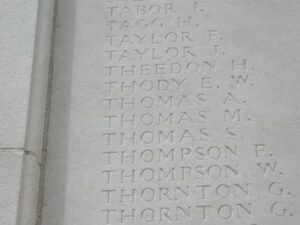
Arthur Thomas Vittle, Mess Room Steward, Mercantile Marine. Arthur was the illegitimate son of Griffith Thomas of Llanycefn and Catherine Vittle, of 23, Main Street, Fishguard. His parents married in 1903, and Arthur, although officially christened Arthur Vittle, went by the name of Arthur Vittle Thomas locally. He served with the Mercantile Marine aboard the S.S. Acadian, a Montreal registered cargo steamer. On 16 September 1918, Acadian was on voyage from Bilbao to Ayr with a cargo of iron ore, when she was torpedoed and sunk by the German submarine UB-117, with the loss of 25 lives. Arthur was 18 years old when he died that day, and is commemorated on the Tower Hill Memorial, London. Arthur is commemorated on the Fishguard memorial as A. V. Thomas. His father won the Military Medal whilst serving with the 10th Battalion, Devonshire Regiment in 1917.
Henry Byron Williams, Second Engineer, Mercantile Marine. Henry was born in Battersea in 1886, the son of Isaac Benjamin Williams and Jane Williams. His father was from Trevine and later moved the family to Scleddy Park, Manorowen. Henry married Mary Muriel Evans, of 197, Coventry Road, Ilford, Essex in 1916. He was an engine fitter and served with the Mercantile Marine, aboard SS Polperro. On 19 July 1918 Polperro was steaming from Marseilles for Sicily, through the Strait of Sicily, when she was torpedoed by the German submarine UC-54. The ship managed to limp to safety in Tunisia but three men were killed in the explosion, one of whom was Henry, who was 32 years old. Henry and two other men were buried at Bizerta Cemetery, Tunisia.
Thomas Henry Williams, Private, 267123, Welsh Regiment. Thomas was born at Abercastle on 9 December 1886, the son of John and Margaret Williams, of Skeddy, Fishguard. He was the husband of Mary Anne Williams, of Park Cottage, Dwrbach. He enlisted at Fishguard on 30 May 1916 into the 17th Battalion, the Welsh Regiment, a Bantam Battalion which formed part of 119 Brigade, 40th Division. The Division landed in France during June, 1916, and fought on the Ancre, before moving toward the Hindenburg Line following the German withdrawal in early 1917. Thomas joined the Battalion on 7 December 1917, when the Division was in the thick of the Battle of Cambrai. This is where John was sadly Killed in Action on 27 December 1917, aged 30. He is buried in St. Leger British Cemetery, France. Sadly, he left behind his widow Mary Ann, and eight children, one of whom, William John Williams, was killed during World War Two.
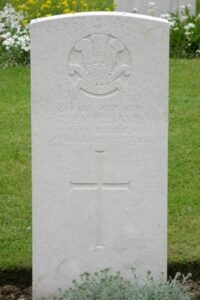
World War Two, 1939-1945
Emlyn Owen Bevan, Able Seaman, D/SSX 17405, Royal Navy. Emlyn was the son of Richard Edward and Margaret Bevan, Of Fishguard, and served in the Royal Navy, aboard HMS Ardent. Ardent was an ‘A’ Class Destroyer, which was commissioned on 14 April 1930. On the outbreak of war she joined the flotilla at Portland to guard the first troop convoys to France. She sailed for Liverpool in January 1940 and was deployed in the Irish Sea and the South Western Approaches. In April she was transferred to the Home Fleet, after the German invasion of Norway, to carry out convoy escort duties. On 31 May 1940, Ardent formed part of an escort force which accompanied the Aircraft Carriers HMS Ark Royal and HMS Glorious to the Norwegian Coast to carry out air operations in support of the withdrawing Allied forces from Norway. On 8 June, Ardent joined HMS Acasta in escorting HMS Glorious back to Scapa Flow, when the ships were discovered by the German Battlecruiser’s Scharnhorst and Gneisenau, and the Ardent and Acasta engaged the vastly superior German Battlecruiser’s to allow the Glorious to escape. Sadly the Acasta and Glorious were sunk in the following battle, and the Ardent capsized, with the loss of over 152 men. One of these was Emlyn Owen Bevan, who was killed in action during the Battle, on 8 June 1940. He was just 22 years old, and is remembered on the Plymouth Naval Memorial, Devon.
William Shatto Davies, Quartermaster, Merchant Navy. William was the son of James Francis and Martha Jane Davies, and the Husband of Gertrude Davies, of Fishguard. He served in the Merchant Navy, aboard the S.S. St. Patrick (London), which was a Cross Channel ferry that worked the Fishguard to Rosslare route. In 1940 she was attacked by the Luftwaffe while on route, but escaped with no damage. On 13 June 1941 she had left Rosslare, and was passing Strumble Head when she was discovered by German Bombers. The first clutch of bombs went straight through the bridge, and set the ships oil tanks on fire. She sank some time afterwards, with the loss of seventeen crew, a Gunner and twelve passengers. The remainder were rescued and landed at Milford Haven. William was one of the unfortunate men who lost his life that day. He was 39 years old, and is remembered on the Tower Hill Memorial, London.
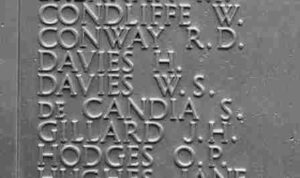
Kenneth Evans, Private, 14623403, the Queen’s Royal Regiment (West Surrey). Kenneth was the son of Benjamin and Martha Anne Evans, of Durnbach, Pembrokeshire. He served with the 1st Battalion. The Queen’s Royal Regiment, which was in India at the outbreak of war. For over a year from October 1940, it was deployed on the North-West Frontier in operations against the tribes and then in 1942 it joined the 7th Indian Division. The Division was deployed in the Arakan in Burma in September 1943 and the Battalion saw some hard fighting through the winter months inflicting the first reverses on the Japanese. In May 1944 the Battalion was flown up to Kohima to help relieve the gallant 4th Queen’s Own Royal West Kent’s who were holding out alone against the main Japanese attempt to invade India. In the battle for Jail Hill, Kohima, the 1st Battalion played a major part in bringing about the defeat of the Japanese. This action was considered the turning point of the War in Burma: thereafter the Japanese were always in retreat. Kenneth was killed in action here, on 11 May 1944, aged just 19. He is buried in Kohima War Cemetery, India.
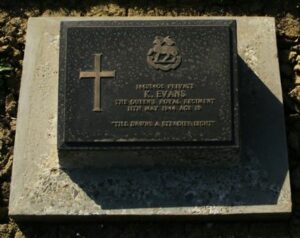
Thomas James Harries, Marine, PLY/X 101137, Royal Marines. Thomas was the son of Mr. and Mrs. T. Harries, of Dinas Cross, and the husband of Gladys Mary Harries, of Fishguard. He served with the 11th Battalion, Royal Marines and died on 14 September 1942. Thomas was 28 years old, and is remembered on the Plymouth Naval Memorial, Devon.
Joseph Harvard, Master, Merchant Navy. Joseph was the son of John and Mary Ann Havard, of Spring Gardens, Fishguard. He married Annie Lilian Owen, of Fishguard, in 1920. Joseph was a long serving mariner, and by the outbreak of war was Master of the S.S. Henri Mory, a Swansea registered merchant steamer. Joseph was killed when his ship was torpedoed and sunk by the German submarine U-110 in the Atlantic on 26 April 1941. Joseph was 49 years old, and is commemorated on the Tower Hill Memorial, London.
William Norton James, Sergeant (W.Op./Air Gnr.), 1338403, Royal Air Force Volunteer Reserve. William was the son of William S. and Florence James, of Dinas Cross. He served in the RAFVR, with 61 Squadron, which was reformed in 1937 and attached to RAF Coastal Command. On 1 February 1944, the Squadron moved to RAF Coningsby, flying the Lancaster and attached to RAF Bomber Command. On the night of 30 March 1944 a massive formation of 795 RAF Bombers left Airfields around the UK, bound for Nuremberg. The German Fighter Command had forecast the route the bombers would take, and that night over 95 bombers were lost, the biggest loss of the war for Bomber Command. One of the Lancaster’s lost contained William, who was only 20 years old when his plane came down on the morning of 31 March 1944. He is buried alongside his crew in Heverlee War Cemetery, Belgium.
Archibald Jenkins, Gunner, 4205561, Royal Artillery. Archibald was the son of David and Margaret Jenkins: Husband of Olivia Jenkins, Of Fishguard. He served in the Royal Artillery, with 116th Light Anti Aircraft Regiment. The Regiment was attached to the 53rd (Welsh) Division, and had landed as part of the reinforcing troops on Normandy at the end of June 1944. Archibald must have been wounded in Normandy, and returned home for treatment, and he died on 17 August 1944, aged 33. Archibald is buried at Fishguard (Hermon) Baptist Burial Ground.
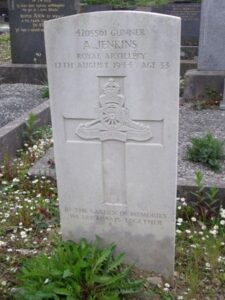
Daniel John Jenkins, Able Seaman, Merchant Navy. Daniel was the son of John and Annie Jenkins, of Dinas Cross. He was one of the four Dinas men who served with the Merchant Navy aboard the SS Empire Amethyst, a Middlesbrough registered steam tanker, of 8,023 tons. On 13 April 1942, when on route from New Orleans for Freetown, carrying a load of 12,000 tons of motor spirit, she was torpedoed by U-1564 and sunk. The ship exploded and went down with all hands. Daniel was 25 years old, and is commemorated on the Tower Hill Memorial, London.
David Gwyn George Jenkins, Private, 5392152, Oxford and Bucks Light Infantry. David was the son of David Gwynne Jenkins and Maud Jenkins, Of Fishguard. He served in the 7th Battalion, Ox & Bucks Light Infantry, which was part of the 167th Infantry Brigade which had fought in Tunisia, and had landed at Anzio during the invasion of Italy. David was killed in action in Italy on 25 September 1943. He was 26 years old, and is buried at Salerno War Cemetery, Italy.
Arthur Gwyn Jones, Flying Officer (Pilot), 169021, Royal Air Force Volunteer Reserve. Arthur was the son of Capt. Richard Thomas Jones and Margaret Jones, and the Husband of Menna Matthias Jones, Of Fishguard. Arthur served prior to the war with the C.I.D., Special Branch, and volunteered for service in the RAFVR, training as a Pilot. Arthur was killed whilst flying an Airspeed Oxford, Serial DF330, which crashed whilst attempting to land at RAF Cranage on on 6 October 1944, aged 31. He is buried at Fishguard (Hermon) Baptist Burial Ground.
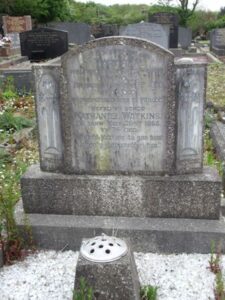
Henry Howard Lewis, Ordinary Telegraphist, D/JX. 196384, Royal Navy. Henry was the son of William and Elinar Lewis, of Fishguard, and the Husband of Mair Lewis, of Fishguard. He served in the Royal Navy, aboard HMS Nighthawk, which was a Royal Naval base at Drem, Scotland. Henry died on 27 October 1945, aged 26. He is buried at Fishguard (Hermon) Baptist Burial Ground.
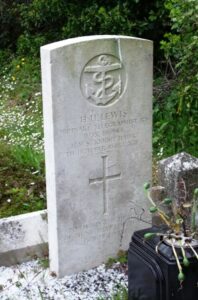
John Robert Miles, Master, Merchant Navy. John was the son of Benjamin and Anne Miles of Fishguard, and the husband of Marion Miles, of Glangwaun, Fishguard. He served throughout World War One and later during WW2 as the Master of the cargo ship MV Empire Drum which was managed by the Chellew Navigation Company Limited of Cardiff. Empire Drum departed from Sunderland on 13 March for the Tyne and two days later joined Convoy FN 655 on her maiden voyage. After suffering mechanical issues she returned to Methil, where repairs were carried out and she sailed on 20 March with Convoy EN 61, before sailing for Liverpool to join Convoy ON79, bound for Halifax, Nova Scotia. She then steamed to New York and reached her destination on 7 April, to be loaded with a cargo of 6,000 tons of military stores. She departed from New York on 23 April bound for Alexandria via Cape Town, but on the following day was torpedoed and sunk by the German submarine U-136. Fortunately all of the crew survived and managed to get into life-boats. Two days later the boat containing John and thirteen of his crew was picked up by a Swedish Merchant ship. John managed to get back to Britain safely, but died on 6 December 1945, aged 52 as a result of his service. He is buried at Fishguard (Hermon) Baptist Burial Ground.
David John Morris, DSC, Lieutenant, Royal Naval Reserve. David was the son of Thomas and Ann Morris. He married Nancy Olwen Roach, of Fishguard , prior to the war. He served in the RNR, at HMS Baldur, which was the Royal Naval Base at Iceland. On 1 October 1943 David was gazetted with the Distinguished Service Cross, for ‘ courage and skill in many successful minesweeping operations in Mediterranean-waters, while serving in HM Ships Negro, Elbury, Achroite and Triton, and HM Motor-Minesweepers 47, 68, 80 and 171’. David was then posted to Baldur in Iceland, but sadly died there on 10 November 1944, aged 38. He is remembered on the Chatham Naval Memorial, Kent, and on the headstone of his wife’s parents at Hermon Baptist Chapelyard. (See Roach below).
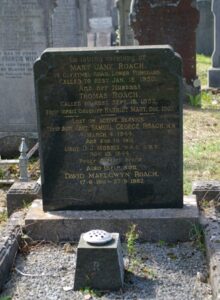
Samuel George Roach, Captain, Merchant Navy. Samuel was born in 1905, the son of Thomas and Mary Jane Roach, of 16, Glynymel Road, Lower Fishguard. He served as a Captain with the Merchant Navy. Samuel was found drowned at Lourenco Marques (Maputo, Mozambique) on 2 March 1944, aged 39, and is buried in Maputo Cemetery. No more is presently known about him, but he is commemorated on his parents grave at Fishguard (Hermon) Baptist Chapelyard.

John Price Williams, Aircraftman 1st Class, Royal Air Force Volunteer Reserve. John was the son of Henry and Eleanor Williams, of Fishguard. He was recruited into the RAFVR, and embarked upon the troopship S.S. Anselm at Gourock, bound for Freetown. On 5 July 1941, Anselm was 300 miles north of the Azores, when she was spotted by the German Submarine U-96. She was torpedoed and sank within minutes, taking down 430 men, including 174 RAF personnel. One of these was John, and he is remembered on the Runnymede Memorial, Surrey.